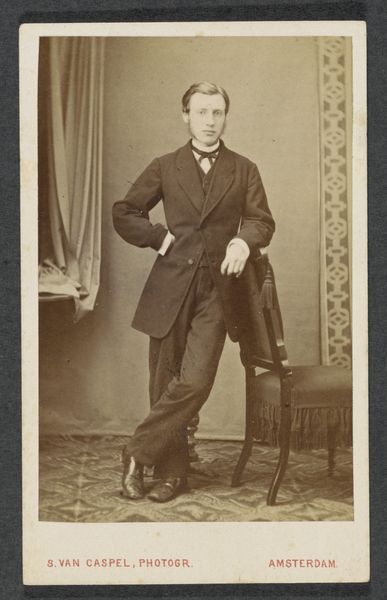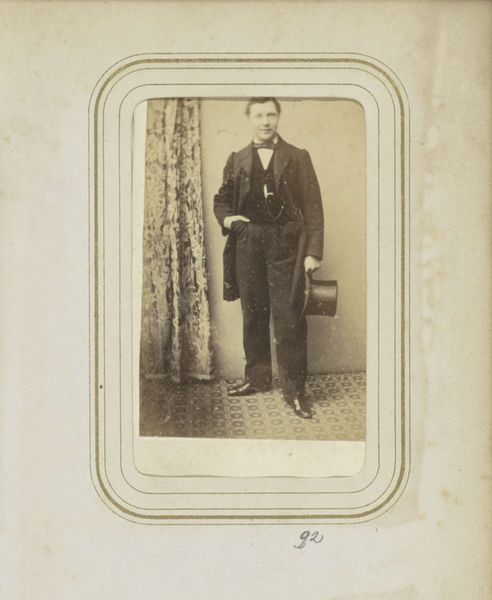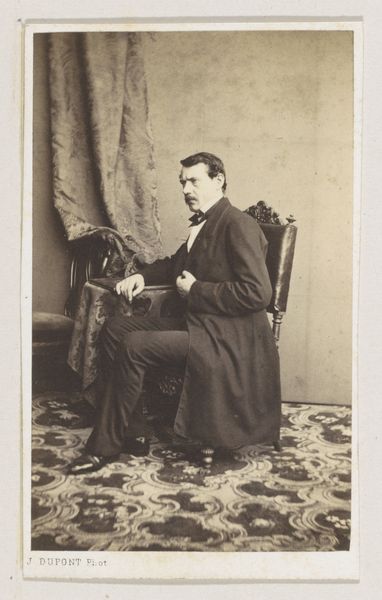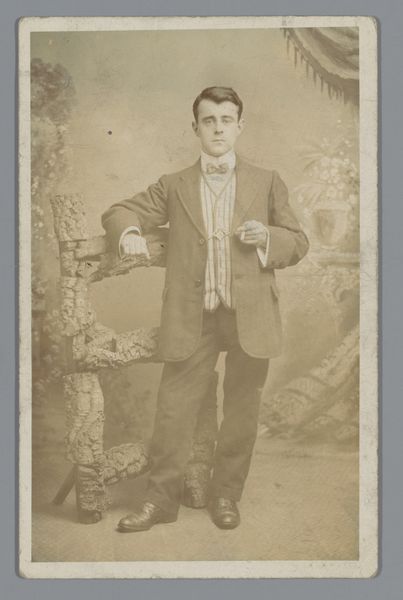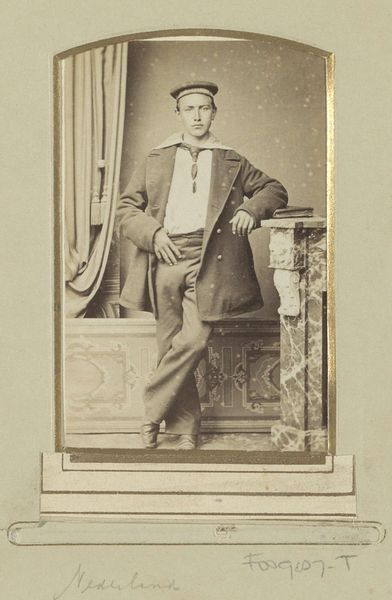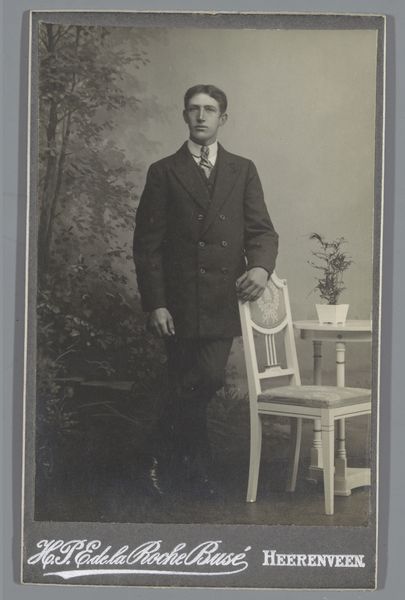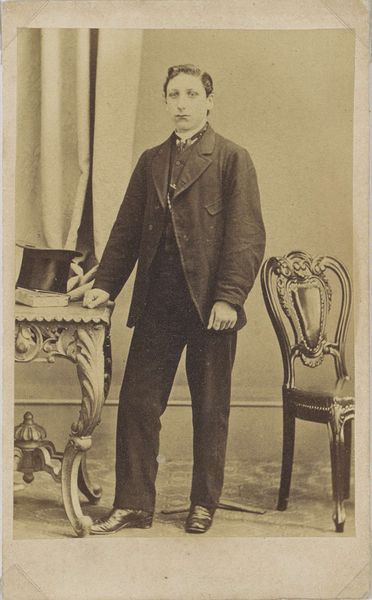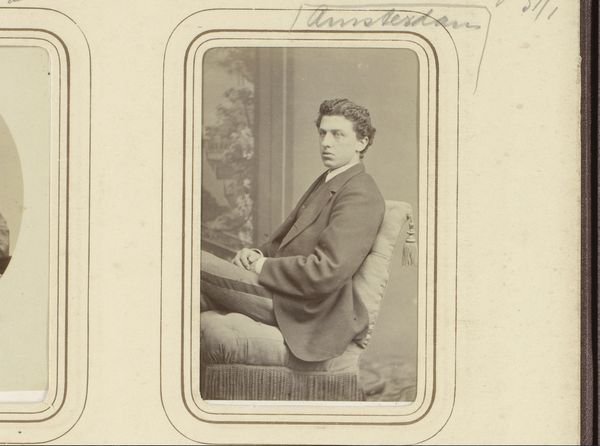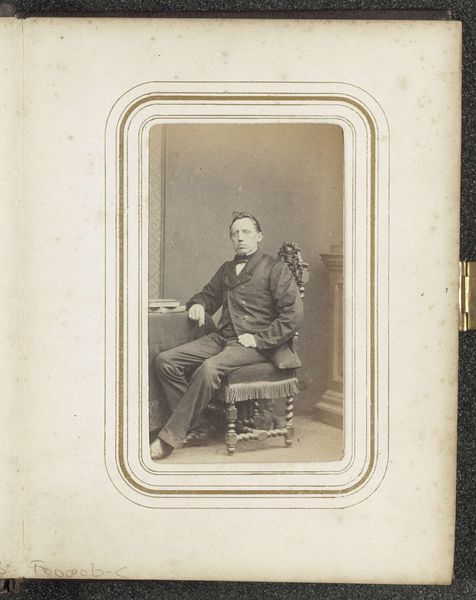
daguerreotype, photography
#
portrait
#
daguerreotype
#
photography
#
academic-art
#
realism
Dimensions: height 102 mm, width 61 mm
Copyright: Rijks Museum: Open Domain
Editor: Here we have a photographic portrait from between 1855 and 1885, titled "Portret van een onbekende man met een stok," by Alpron. It seems like a pretty standard depiction of bourgeois status with that formal pose and theatrical backdrop. What strikes you most about this daguerreotype? Curator: What's fascinating is thinking about the *process* behind this seemingly simple image. The daguerreotype was quite labour-intensive and expensive. Look at the surface – it’s silvered copper. This man clearly had the economic means to afford this type of photographic service. Consider too the photographic studio itself – the material resources and division of labor required for this. Editor: So, you’re focusing less on the *who* and more on the *how* and *why* it was made? Curator: Precisely. Who the sitter *was* almost becomes secondary. I am much more interested in the social function of photography in this era: as a status symbol. The cane, the hat placed to the side: these props signify a particular kind of manufactured identity, carefully constructed. Note too Alpron’s branding at the bottom, his studio operating out of Padova – imagine the consumption patterns and commercial infrastructure at play. Editor: That's interesting, how you highlight the studio's role as almost like a manufacturer of status... Curator: Indeed. These objects and the image itself weren't just 'made'; they were *produced*, and that production tells us about class, commerce, and even artistic aspirations during the time. Does that make sense? Editor: Definitely. I hadn't really thought about the labour and materials that went into creating something like this, or how that impacted the picture's social meaning. Curator: Thinking materially shifts the emphasis to production. Who made it, how, and with what effect? The anonymous sitter becomes a vehicle for that analysis. Editor: Thanks, I'm seeing this in a new light now, as more of a constructed commodity of its time!
Comments
No comments
Be the first to comment and join the conversation on the ultimate creative platform.
